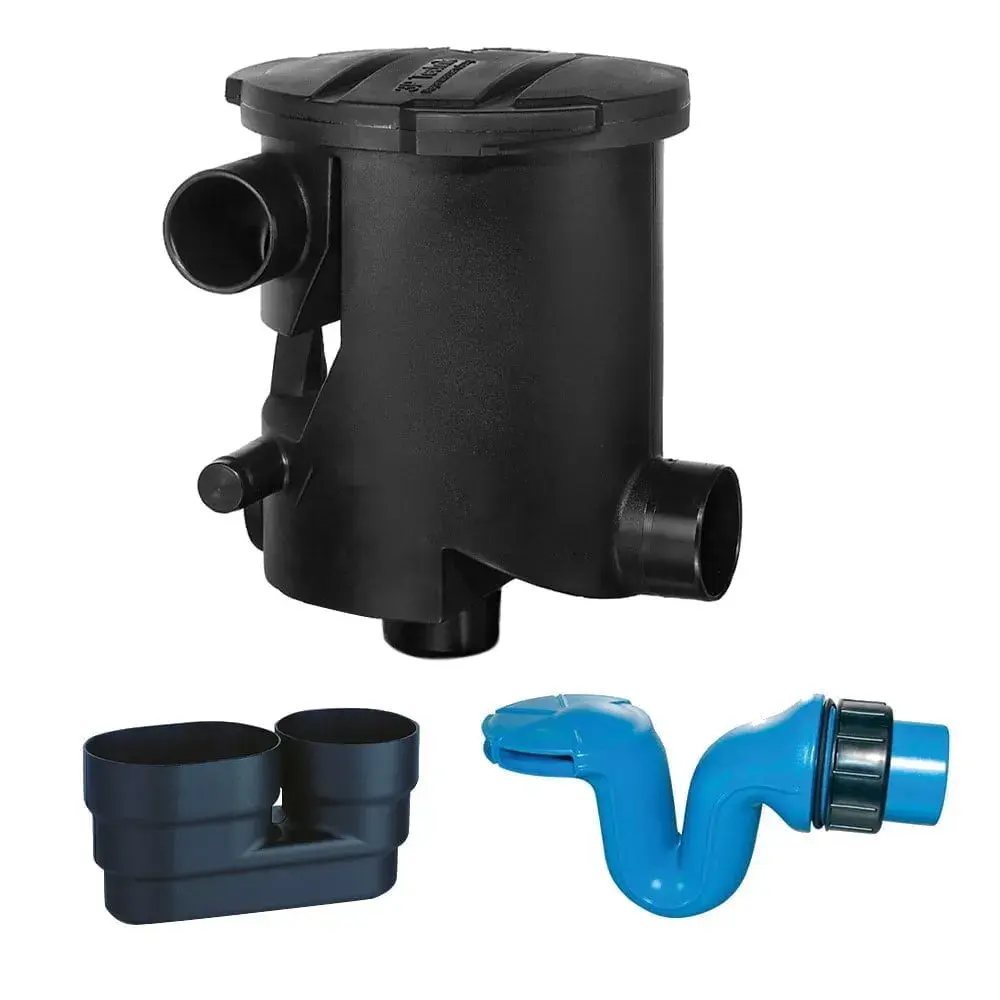
Clarification tanks, also known as sedimentation tanks, play a critical role in wastewater treatment by separating solids from water through the process of sedimentation. Optimising the performance of these tanks is essential to improve treatment efficiency, reduce operating costs, and comply with environmental regulations. By ensuring optimisation throughout, it can also reduce stress on the system which in turn reduces the risk of potential damage.
In this article we’ll take a comprehensive overview of the factors affecting their efficiency such as flow rates, sludge removal and tank design, and the strategies that can be put in place to ensure you’re maximising their operational efficiency.
1. Type Of Clarification Tank
Using the correct type of clarification tank is the first step for efficient wastewater treatment. There are six main types of polyethylene tank. The most popular is the standard circular clarifier, which can be used in both the primary and secondary phases. Rectangular clarifiers are designed for small spaces, while small spaces that have very intense flows benefit from high-rate clarifiers. Mechanical clarifiers are found in large, industrial settings. When small particles are an issue, vast, shallow lamella clarifiers are the go-to choice. Cross-flow clarifiers are the most effective solution for water with a high concentration of solids. As such, efficiency begins with selecting the correct clarification tank for the application.
2. Sizing And Flow Distribution
After the choice of tank, two key factors determine effluent tank efficiency. These are sizing and flow distribution. The size of the tank is related to sediment control. Too much sediment, and the system will be slower and less efficient. At its worst, this can cause ‘short-circuiting,’ which is when wastewater bypasses the system altogether, or can cause vital Fluid Category 5 backflow prevention systems to fail. When the size is correct, these risks are minimised. Flow distribution is controlled by the design of the inlet and outlet structures, so paying close attention to these details can pay dividends in terms of efficiency.
3. Additives Used In Wastewater Treatment
Common additives in effluent wastewater treatment are coagulants and flocculants. Coagulants cause particles to clump together, while flocculants encourage them to settle as sediments. There are many types available. Many of these are organic, and therefore do not affect the pH of the water. PolyAMINEs and polyDADMACs, melamine formaldehydes, and tannins are all popular, safe, easy, and efficient organic wastewater clarification choices. Inorganic options are usually metals derived from aluminium or iron, and include polyaluminium chloride (PAC) and Aluminium Chlorohydrate (ACH). Although very effective, their potentially hazardous nature means an expert is required to set-up the application of non-organic additives.
4. Monitoring Your Clarification Tanks
Careful monitoring is a frontline defence for efficient clarification tank operation. Key operational parameters include the basics such as overflow and underflow rates, sludge levels, and turbidity. However, it is also important to keep an eye on less well-known parameters. Frequently overlooked are temperature and environmental conditions. Clarifier tanks in wastewater treatment are biological processes, so are vulnerable to temperature changes. During a heatwave of 35oC or above, floc formation becomes more difficult, and efficiency can plummet. Cold snaps below 10oC see nitrification efficiency suffer. In both cases, the application of the correct additives can help to solve the problem.
What Next?
Ready to take your wastewater management processes to the next level? Contact the experts at Enduramaxx today to get a free quote and learn more about our wide range of Clarification Tanks!
Image Source: CanvaPosts By Topics
- Blog (303)
- Chemical Storage Tanks (118)
- Chemical Dosing Tanks (114)
- Chemical Tanks (114)
- Water Tanks (58)
- Rainwater Harvesting Tanks (43)
- Vertical Rainwater Tanks (31)
- Vertical Storage Tanks (31)
- Cone Bottom Tanks (19)
- Conical Cone Tanks (18)
- Rainwater Harvesting (17)
- Water Bowsers (15)
- Horizontal Tanks (14)
- Potable Water Tanks (13)
- Farming (9)
- Case Studies (8)
- Industrial Storage Tanks (7)
- Liquid Fertilser Storage Tanks (6)
- WRAS Approved Potable Tanks (6)
- Wine and Beer Production (6)
- Horizontal Transport Tanks (5)
- Microbrewery (5)
- Rainwater (5)
- Category 5 Break Tanks (4)
- Cider Production (4)
- Mixer Tanks (4)
- Molasses Tanks (4)
- Polyethylene tanks (4)
- Rainwater Filter Kits (4)
- SPECIALIST & BESPOKE TANKS (4)
- Bunded Tanks (3)
- Slimline Tanks (3)
- WRAS Approved (3)
- Clarification Tanks (2)
- Crosslinked Polymer Tanks (XLPE) (2)
- Fertiliser Tanks (2)
- Sump Tanks (2)
- Tank Installation (2)
- Water Butt (2)
- underground water tanks (2)
- ACCESSORIES & FITTINGS (1)
- ATV & UTV SPRAYING UNITS (1)
- Above Ground Effluent Tanks (1)
- Bespoke Tank Frames (1)
- Category 5 Turret (1)
- Caustic Soda Tanks (1)
- Closed Top Bunded Tanks (1)
- Craft beer (1)
- Effluent Tanks (1)
- Enduramaxx (1)
- Ferric Chloride Tanks (1)
- Fire Safety Regulations (1)
- Fire Sprinkler Water Storage Tanks (1)
- Industrial Water Tank (1)
- Open Top Bunded Tanks (1)
- Open Top Cone Tanks (1)
- Open Top Vertical Tanks (1)
- Polyethylene Potable Water Tanks (1)
- Polyvinylidene Fluoride (PVDF) Tanks (1)
- Polyvinylidene Fluoride Tanks (PVDF) (1)
- Pressure Washers (1)
- Pro Series Spot Sprayers (1)
- RWH (1)
- Sodium Hydroxide Storage Tanks (1)
- Sprayer Fill-up Tanks (1)
- Uncategorised (1)
- liquid fertiliser tank (1)
Sign up to the newsletter
enduramaxx.marketing
Related Posts
Enduramaxx Aquaculture Tank Range, Our Core Products
Enduramaxx lists its plastic aquaculture tank range online which includes open-top tanks, conical...
Primary Water Treatment Explained | Enduramaxx
Primary Water Treatment is the primary sedimentation stage, sewage flows through large tanks,...
Enduramaxx Water Treatment Tanks: Our Core Products
Enduramaxx now lists its water treatment mixer, storage, and treatment tank range online, including...
Related Products
From £1,080.00 inc. VAT
£900.00 exc. VAT
From £1,344.00 inc. VAT
£1,120.00 exc. VAT
From £768.00 inc. VAT
£640.00 exc. VAT
£480.00 inc. VAT
£400.00 exc. VAT






